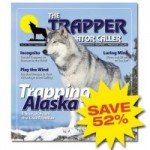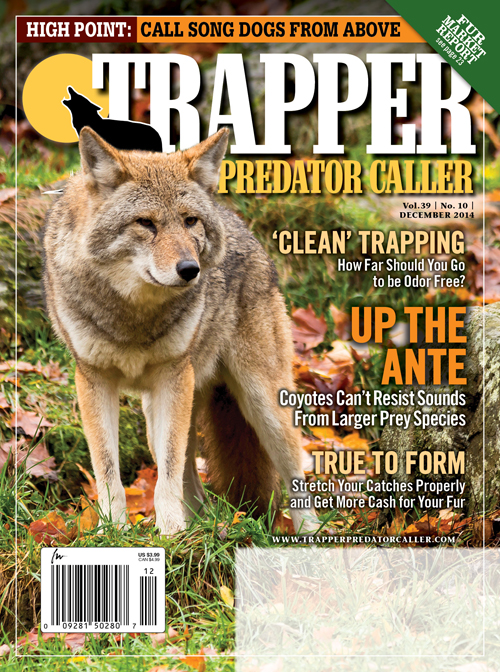
This is a portion of Jim Spencer’s story “’Clean’ Trapping,” which appeared in the December 2014 Trapper & Predator Caller issue.
By Jim Spencer
I can’t help but come to the conclusion that, in most cases, the concept of “clean” trapping is vastly overrated.
I’m in no way trying to belittle the collective knowledge and skill of old-time trapping writers who were very concerned about leaving human scent and other odors around their set locations. Times were different when those guys taught themselves to trap. Furbearers were scarce, the rural human population was higher, and times were hard. A mink or raccoon was worth a week’s wages, and every farm boy had a trapline. An old man who had trapped in the 1920s and 1930s once told me that back then, if you found a set of ’coon tracks in the mud, there’d also be a set of bluetick hound tracks and two sets of brogan shoe tracks there, too, following it. That was probably an exaggeration but probably not by much.
Today, furbearer populations are higher and competition for them is lower. Rural human populations are decreasing, and despite the recent increase in trapping activity when the fur market was climbing through the roof from 2008 to 2012, trapper numbers are slowly but steadily decreasing. Because we have more animals to work with, and because the financial aspect of trapping isn’t as important to most of us as it was to our great-grandfathers, clean trapping is simply not as important.
For one thing, clean trapping is a considerable bother, and like any bother, it slows you down. If it takes 10 minutes to make a squeaky-clean set and only five to make one that’s not quite so sterile, simple mathematics shows it will take twice as long to set the same amount of traps. You’ll probably catch more critters in clean, odorless sets than in dirty, smelly ones, but will you catch twice as many?
My own experience with clean versus not-so-clean traps indicates otherwise. It appears to me, therefore, the bottom line is inescapable: If you’re too persnickety and fussy about making sure everything is clean as a whistle, it’s going to take you more time to make each set, and you won’t be able to make and maintain as many sets. In the end, you’ll catch less fur, not more.
Spencer’s full “’Clean’ Trapping” story appeared in the December 2014 Trapper & Predator Caller issue.
You can pick up a copy of the digital issue on www.ShopDeerHunting.com.
Subscribe to Trapper & Predator Caller Magazine
 Trapper & Predator Caller is the best trapping and predator hunting magazine. Why aren’t you a subscriber? Sign up today and receive furbearer news, trapping techniques, fur market reports and more right to your mailbox.
Trapper & Predator Caller is the best trapping and predator hunting magazine. Why aren’t you a subscriber? Sign up today and receive furbearer news, trapping techniques, fur market reports and more right to your mailbox.

